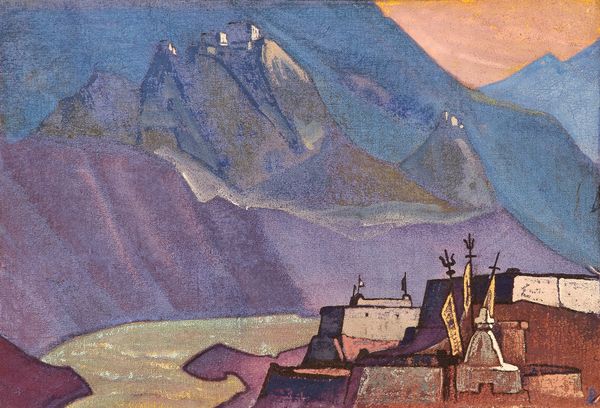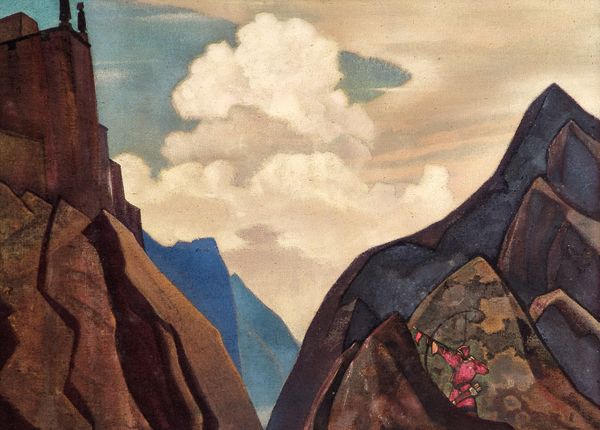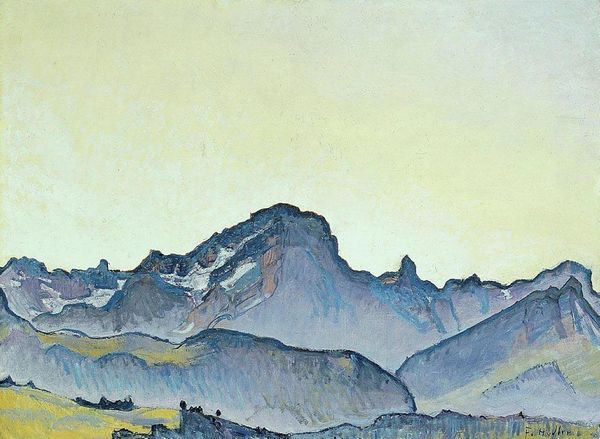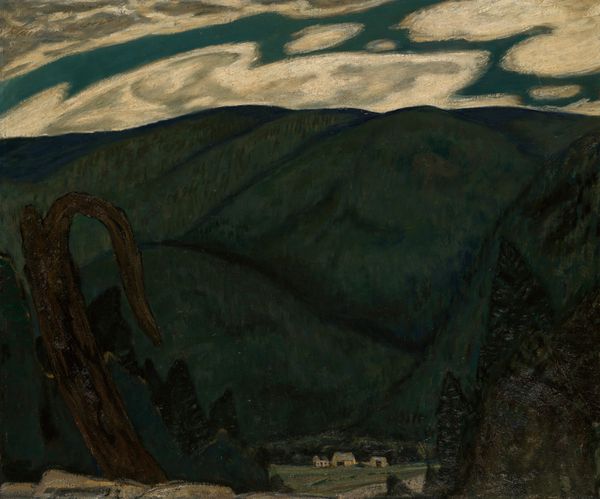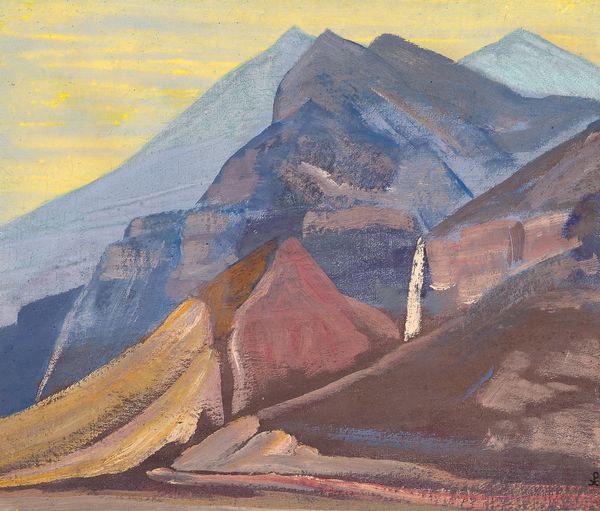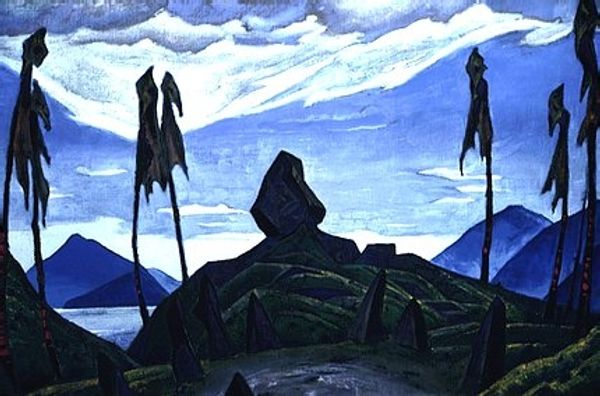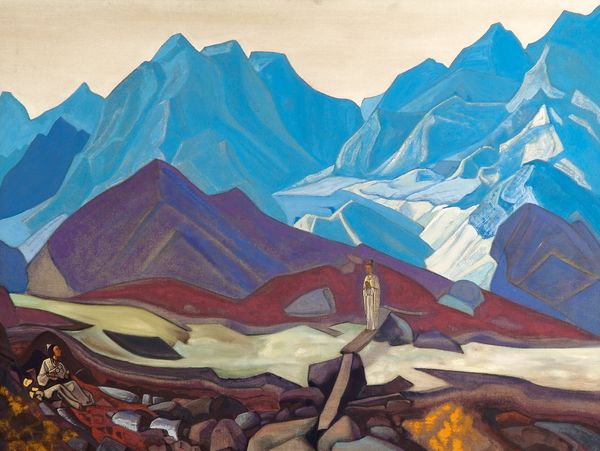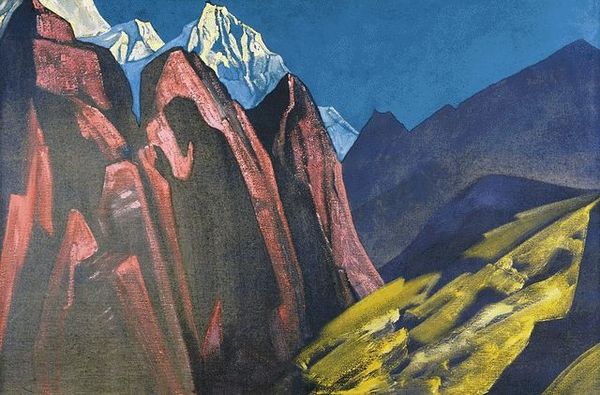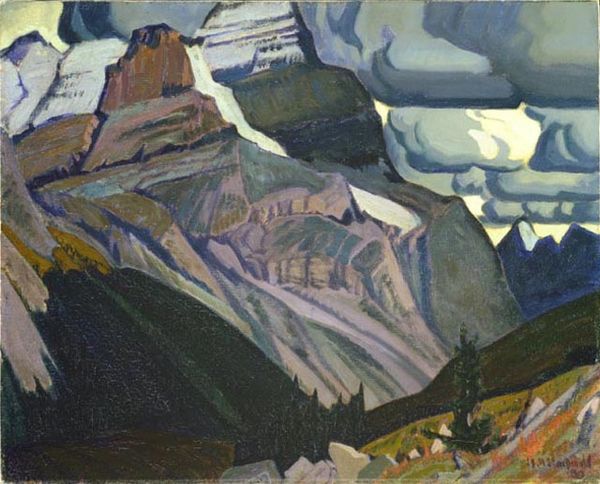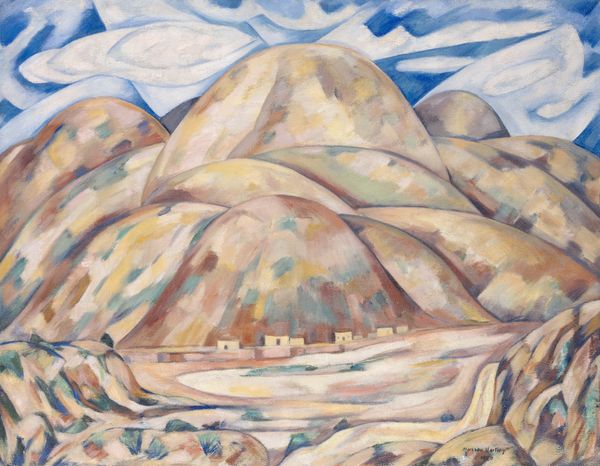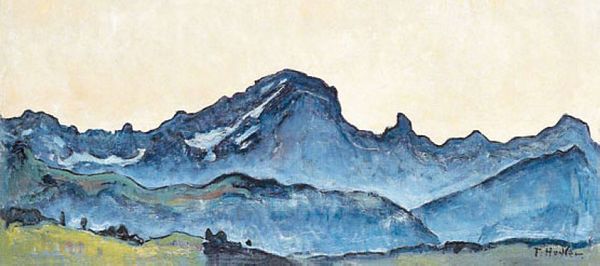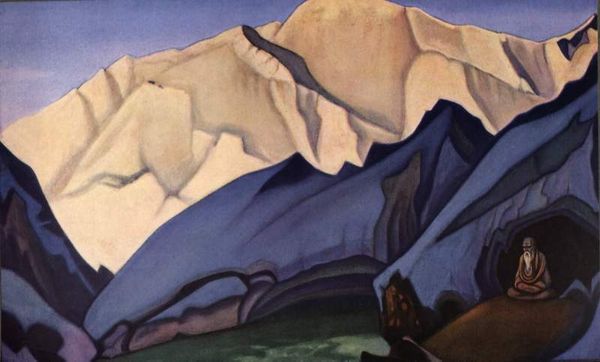
Copyright: Public domain
Curator: Before us hangs Nicholas Roerich's "Study of scene decoration for 'The Rite of Spring'", created in 1930, an oil painting imbued with a mystical aura. What strikes you upon first viewing? Editor: There’s an undeniable eeriness to it. The stark, almost geometric forms, coupled with the muted, somber palette, creates a landscape that feels both ancient and vaguely unsettling. It definitely prepares one for a rite of some kind. Curator: Indeed. The power resides significantly in Roerich's sophisticated handling of form. Notice the vertical thrust of those totem-like poles, framing a central hill topped with a striking rock formation. The repetition of triangular shapes – the stones in the foreground, the distant mountains – creates a visual rhythm, a pattern that guides the eye and establishes an atmosphere of ritualistic space. Editor: I'm intrigued by Roerich's role in designing the stage sets and costumes for Diaghilev’s ballet. "The Rite of Spring" caused such a scandal; this painting provides visual clues as to why. Look at those dilapidated figures lining the sides. These feel totemic. There is such a strong current of pagan symbolism present that audiences would almost certainly see this as more than pure aesthetics. It represented shifting worldviews. Curator: Exactly. Roerich, deeply influenced by Theosophy and Eastern philosophy, used these stylized forms not just decoratively, but as carriers of symbolic meaning. The colors themselves are deliberate – the earthy browns and greens speaking to a connection with the land, the pale blues and grays suggesting the ethereal. This speaks to a deeply structured symbolic world that would certainly contribute to a revolutionary dance and stage event. Editor: Considering the era – the rise of totalitarianism in Europe – one can’t ignore the possible political undercurrents. "The Rite of Spring," in its primitivism, rejects classical tradition. This staging challenges traditional ideas of beauty in that way as well. I wonder to what extent Roerich was using the past to confront present social orders. Curator: That's an interesting point. Regardless of any overt political statement, Roerich created a visual vocabulary that challenged conventional representation. By reducing the landscape to its essential forms and imbuing those forms with symbolic weight, he transcended mere depiction. Editor: Absolutely. And now I am reflecting again, seeing more than just unsettling feelings; Roerich evokes an almost sacred space that is worthy of both contemplation and respect. Curator: I concur. Ultimately, the work encapsulates a fusion of modernist aesthetics and primordial mysticism, providing a window into a worldview profoundly concerned with the spiritual resonance of landscape.
Comments
No comments
Be the first to comment and join the conversation on the ultimate creative platform.
